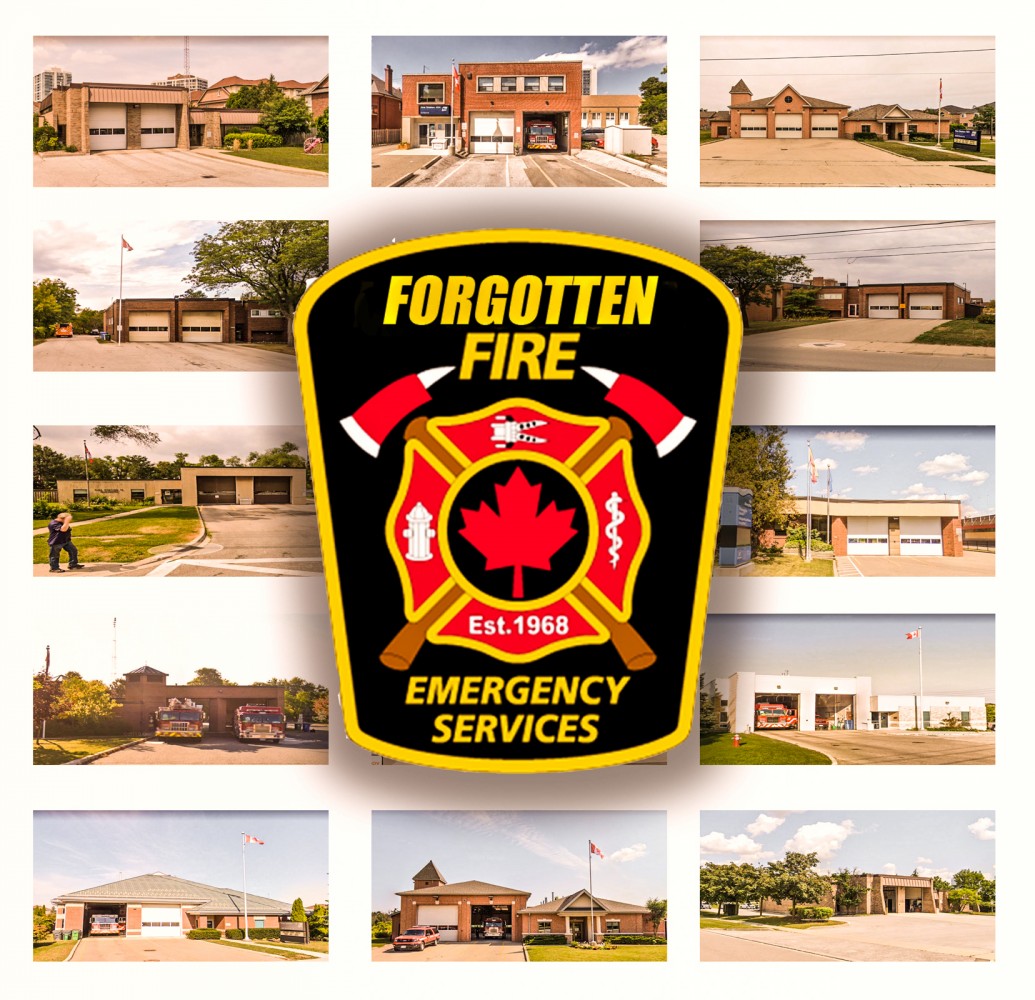
Part 3 - Firefighters already exposed to hazardous fumes kept in the dark about asbestos in at least 9 Mississauga fire stations
“If there is asbestos in these buildings, there has been a coordinated effort to mislead the association and our firefighters. We have been assured repeatedly that these buildings are free from asbestos.” — Chris Varcoe, Mississauga Fire union president
The yellow-orange glow of an out-of-control inferno captures the imagination and fear of onlookers.
But the worst threat to the firefighters dispatched to save lives and property, is invisible.
After racing to the scene of house fires and industrial blazes, our first responders are immediately exposed to a highly toxic mix of chemicals and other dangerous particles.
A 16-month study by the University of Ottawa, Health Canada and the University of Toronto measured urine and skin-wipe samples from Ottawa firefighters before and after their shifts, and found what the brave women and men on the frontlines have known for years.
They had three to more than five times the rate of cancer-causing hydrocarbons in their urine after battling a fire, and levels of other chemicals found in smoke linked to DNA mutations were more than four times higher, according to the study, concluded in 2016.
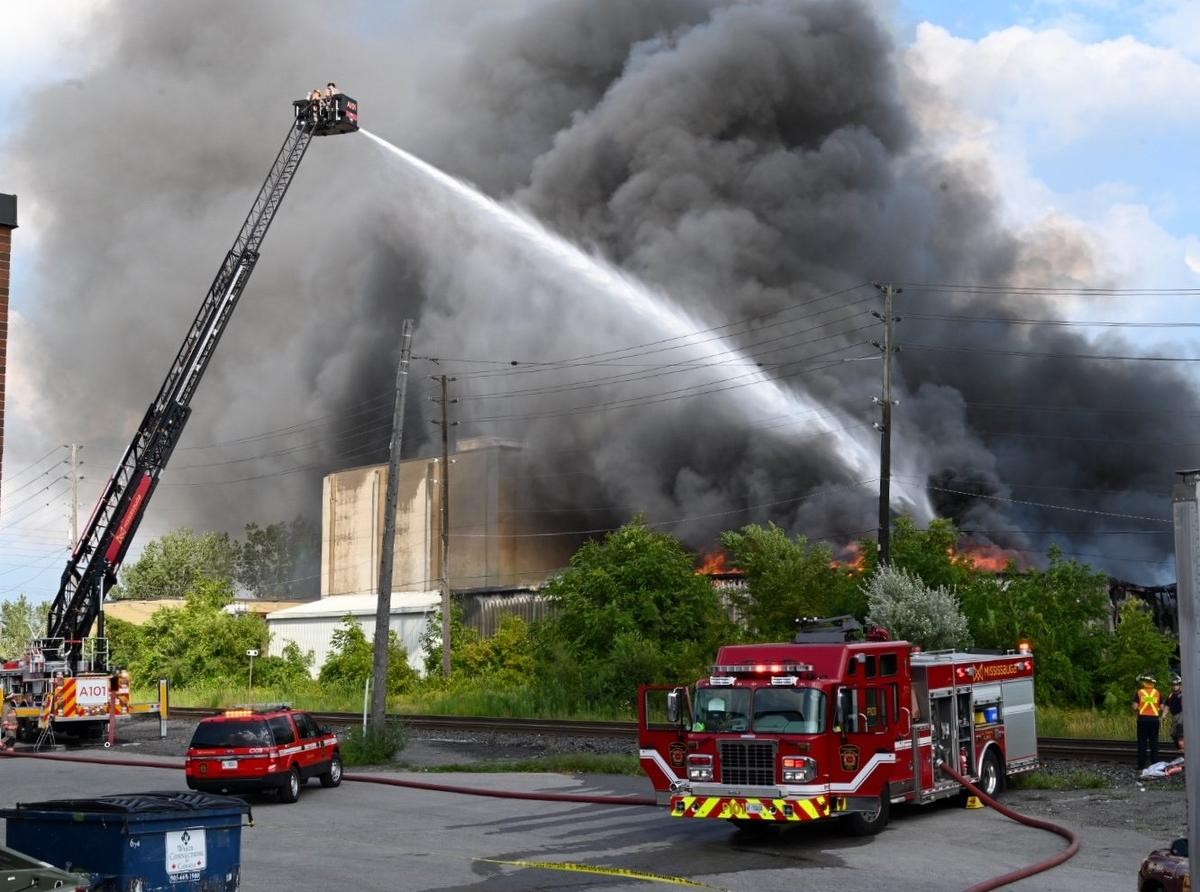
Firefighters are exposed to a toxic mix of fumes when battling a blaze, should they face the same thing when resting in their fire stations?
None of this is news to the close-knit community of firefighters across North America. They are well aware of the killers that routinely fell those in their circles.
Firefighters are three times more likely to die from cancer than the average Canadian. Other lung diseases are also far more common among firefighters.
A 2018 study by the University of Fraser Valley in British Columbia found firefighters were 86 percent more likely to die of cancer than any other fatal illness or injury. The research, completed using data spanning a decade, found roughly 50 firefighters out of 100,000 pass away as a result of cancer in the country every year.
In Mississauga, for many of the city’s firefighters the threat does not end after they leave the scene of a blaze and walk away from the toxin-filled smoke and polluted air that fills the space of a fire emergency.
An audit, completed in 2019, shows asbestos in several Mississauga fire stations where frontline emergency responders eat, sleep and live during their shifts.
As if the grave, unavoidable, risks of their work isn’t enough to deal with, many first responders in Mississauga are exposed to another entirely avoidable health risk while at their own fire stations.
If inhaled, asbestos fibres can “cause cancer and other diseases,” according to Health Canada.
Most building materials that used asbestos were banned in the ‘80s, when they were first removed from structures across the country, but a formal, sweeping prohibition of the highly carcinogenic substance didn’t come into effect until late 2018.
However, the internal audit, obtained by The Pointer through a Freedom of Information request after City staff refused to share it, shows the harmful material is still present in many stations where firefighters could be exposed.
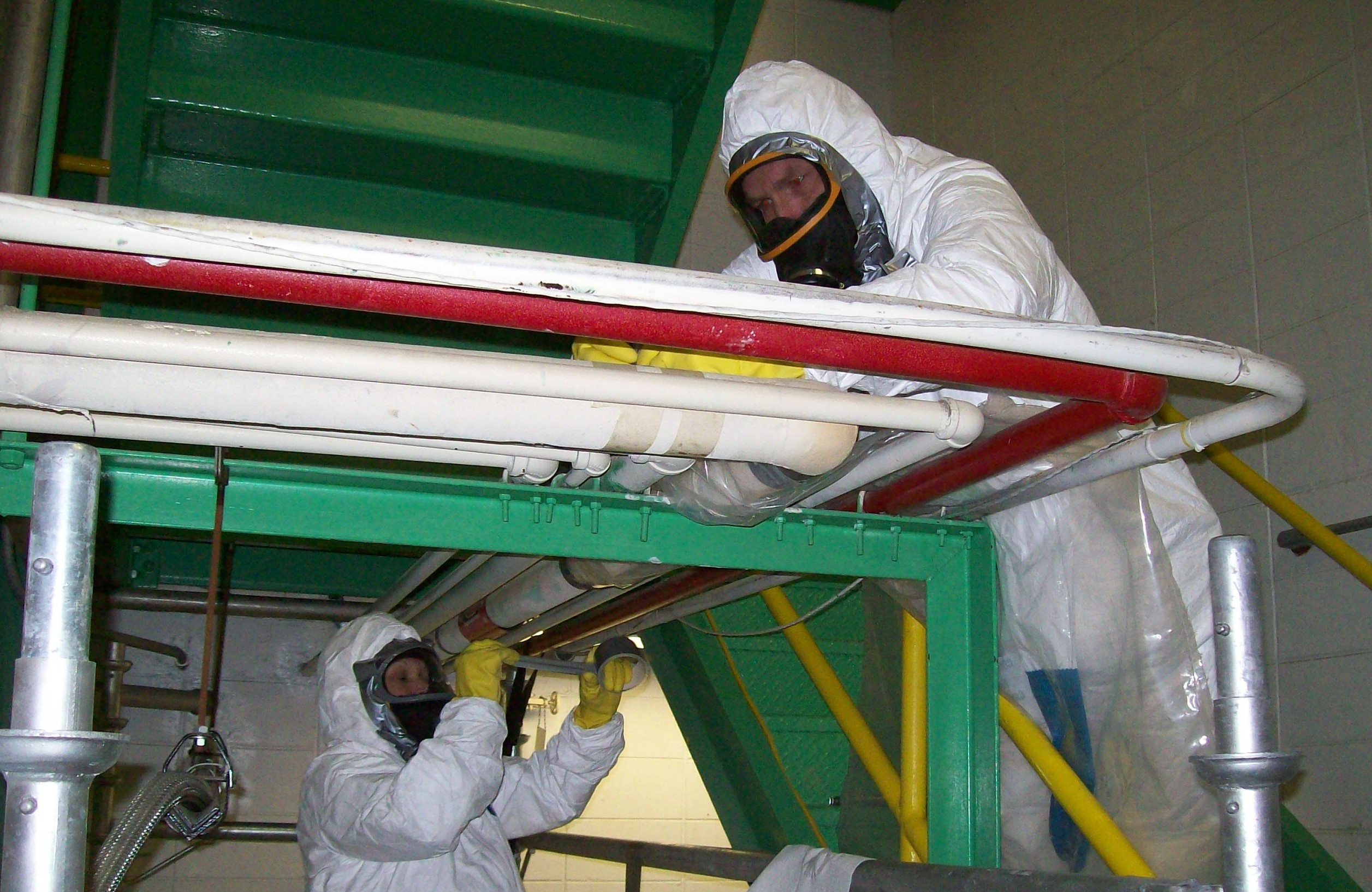
Asbestos, when disturbed, can release cancer-causing fumes into the air. Removing it from existing buildings is a cautious and costly affair.
The same audit shows buildings with issues such as improper access, a lack of washrooms for female staff and gaps in the structural integrity of some of the oldest stations. It suggests more than $30 million in repairs are needed to get them up to the most basic standards, admitting three are beyond help.
In total, nine of the 14 fire stations inspected by auditors had asbestos somewhere in the building. The examples range from asbestos cement (known as transite) to chrysotile asbestos under the flooring or in drywall finishes around some of the facilities.
Fire union boss Chris Varcoe, who represents Mississauga’s firefighters, said he was shocked by the revelation.
“If there is asbestos in these buildings, there has been a coordinated effort to mislead the association and our firefighters,” he told The Pointer. “We have been assured repeatedly that these buildings are free from asbestos.”
Fire Station 103, 104, 105, 107, 108, 109, 110, 111 and 112 are all referenced in the audit in relation to the presence of asbestos. The 2019 audit only dealt with 14 of the City’s fire stations, meaning it did not address the possible presence of asbestos in the remaining seven stations.

Mississauga firefighters union boss Chris Varcoe
According to the Building Condition Audit, the City has been aware of asbestos in its fire stations for at least 11 years. A report specifically into the potentially dangerous substance was commissioned in 2009, finding it present in several of Mississauga Fire’s older buildings.
Many of the references to asbestos in the 2019 audit recycle recommendations made more than a decade ago, showing the issue has not been addressed. “Transite rainwater pipes contains (sic) asbestos cement (Transite) per HMIS Asbestos Assessment prepared by Pinchin Environmental dated Nov. 24, 2009,” a section of the inspection report for Fire Station 105 states.
The Pointer asked the City why no action has been taken to deal with asbestos in fire stations over the past 11 years.
“Asbestos-containing material will not release asbestos fibers unless they are disturbed or damaged in some way,” a spokesperson told The Pointer, adding the City works with consultants to “maintain compliance with legislative requirements.” That compliance includes “managing asbestos in buildings” and taking precautions during construction when it would be disturbed.
In a separate response, a spokesperson highlighted the City’s stance that the material is not a problem. “We reiterate that as long as asbestos containing materials are not disturbed, there is no health and safety issue. Any type of construction work goes through Facilities & Property Management and there are protocols in place when we complete construction work on City properties,” the spokesperson said Friday.
Though the City claims there is no concern, unforeseen circumstances could arise, such as an extreme weather event or other natural disaster could disturb the buildings and asbestos.
The claims of the City didn’t sit well with the union president.
“It lacks transparency. You’re almost left wondering if it is on purpose to be as ambiguous as possible, whether there’s an attempt to shield what’s in the walls,” Varcoe said, of the City’s initial response. “We’ve been told repeatedly there are no concerns … and I don’t share that optimism. I am concerned.”
City Hall’s reassurances about asbestos raises skepticism, considering the findings of its own internal audit, which staff refused to share publicly; two councillors, Ron Starr and Carolyn Parrish, suggested to The Pointer that they were not familiar with the audit. It includes a rating for the building integrity of each of the 14 surveyed fire stations. The scale was as follows: Any facility below 5 percent (representing the amount and severity of issues) is “good”; 5 to 10 percent is “fair”; and above 10 percent is “poor”.
Fire Station 109, with asbestos detected, had a building condition rating of 21.97 percent. The audit recommends “structural tests” to see if corroded steel lintels were impacting the “structural adequacy” of surrounding parts of the building. It also found trees to be “accelerat[ing] the deterioration” of the exterior of the building.
The City has told The Pointer it does not see the need for additional tests for the building, despite the recommendation of its own internal audit.
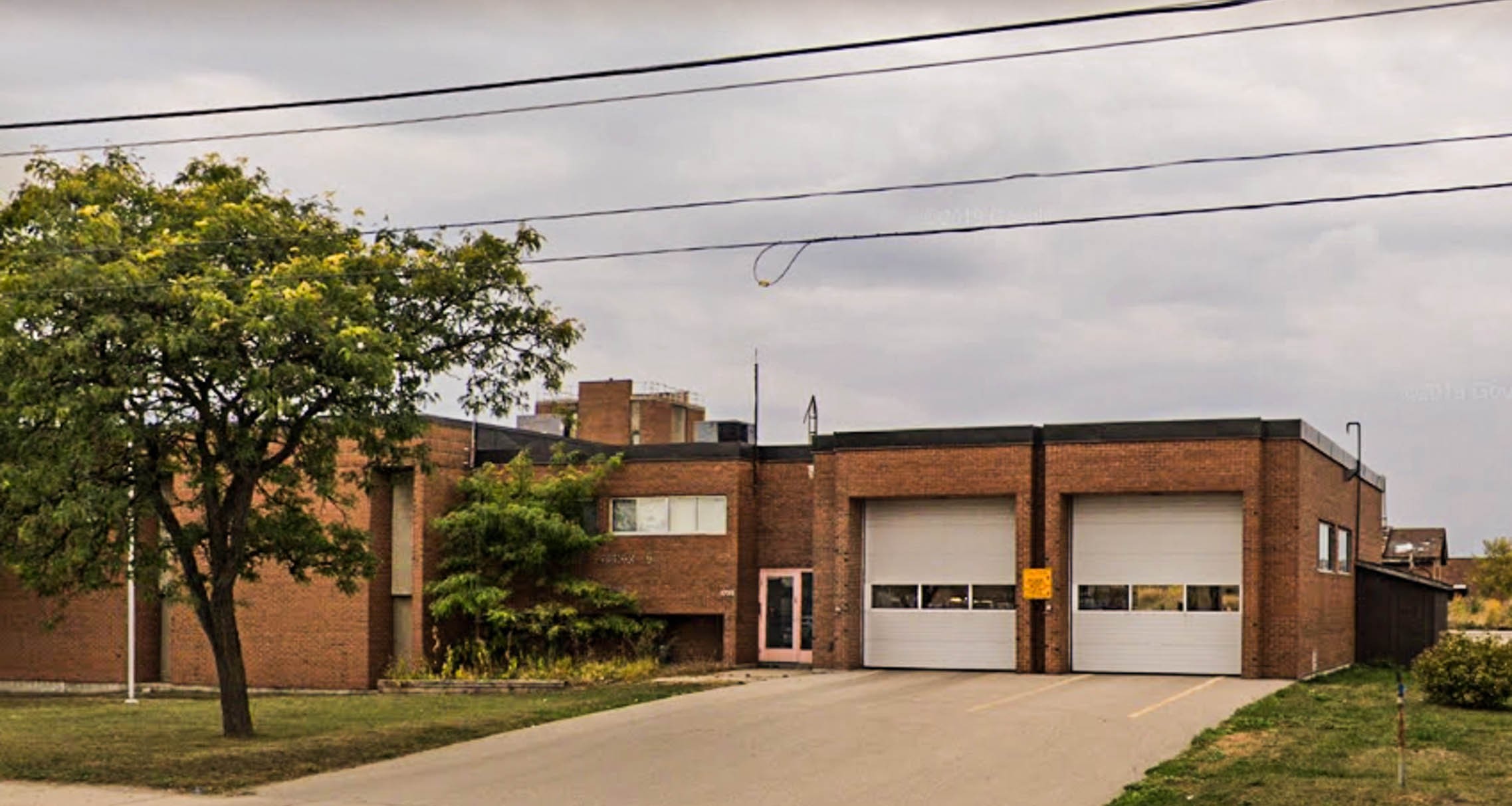
An audit completed last year had questions about the "structural adequacy" of Fire Station 109.
The internal audit department staff was not made available and a request for a formal interview about the audit was not addressed.
It’s unclear who in City Hall is responsible for the responses that were provided.
When asked why no further tests are needed, a spokesperson said there is “no indication that structural integrity of the building has been compromised.”
This is a direct contradiction of the audit’s findings.
Inside building 109, there are four separate places that contain asbestos. According to the audit report, ceiling tiles, drywall “throughout the facility”, vinyl sheet flooring and vinyl floor tiles all contain chrysotile asbestos.
“Assume all drywall joint compound to contain chrysotile asbestos unless further sampling proves otherwise,” the report warns.
“There is a level of accuracy to say that, as long as it is in place and it’s not disturbed, it’s fine,” Fe de Leon, a researcher and paralegal specializing in asbestos at the Canadian Environmental Law Association, told The Pointer. “However, the problem is how do you know it’s not disturbed? Over time, if it is disturbed, it ends up moving around in the air. So unless it [the area containing asbestos] is sealed off, there is no certainty it won’t end up in the vents or, over time, crumble, particularly with the tiles.”
She also pointed to firefighting foam as an example of a carcinogenic material firefighters are regularly exposed to. Airborne asbestos could grossly exacerbate that exposure.
De Leon explained institutions should have a plan in place to dispose of the material and replace it with a safer alternative. They should also be transparent in their messaging, including clear signage locating parts of a building where asbestos exists.
“The building should have a plan that locates the sites where there is asbestos and that plan should be accessible, particularly to the workers. Firefighters should have access to that plan,” she said.
The City said it had “asked fire staff to print copies” of the asbestos technical reports completed in 2009 and leave them at the “11 fire halls that have various degrees of asbestos.”
The Pointer has been able to identify nine stations with asbestos, it is unclear which remaining stations the City referenced. Neither the 2009 report nor the 2019 audit includes fire stations 101 or 102 which, based on their age, would possibly contain asbestos, as it was commonly used when they were built.
Most private-sector buildings and government offices and facilities with asbestos have had the dangerous substance removed since the ‘80s. It is directly linked to many high-profile fires, such as the 2017 Grenfell apartment tower blaze, which killed 72 people in London, England. The building contained asbestos, and there were concerns that those exposed to the fire could be at risk of developing cancer.
It is also unclear if staff had previously been asked to print the reports and leave them in fire halls or if this action was only taken after questions from the media.
“There is no legislated requirement to have asbestos signage posted in buildings,” the City added – a tone deaf response suggesting an unwillingness to do more than the bare minimum to keep first responders safe.
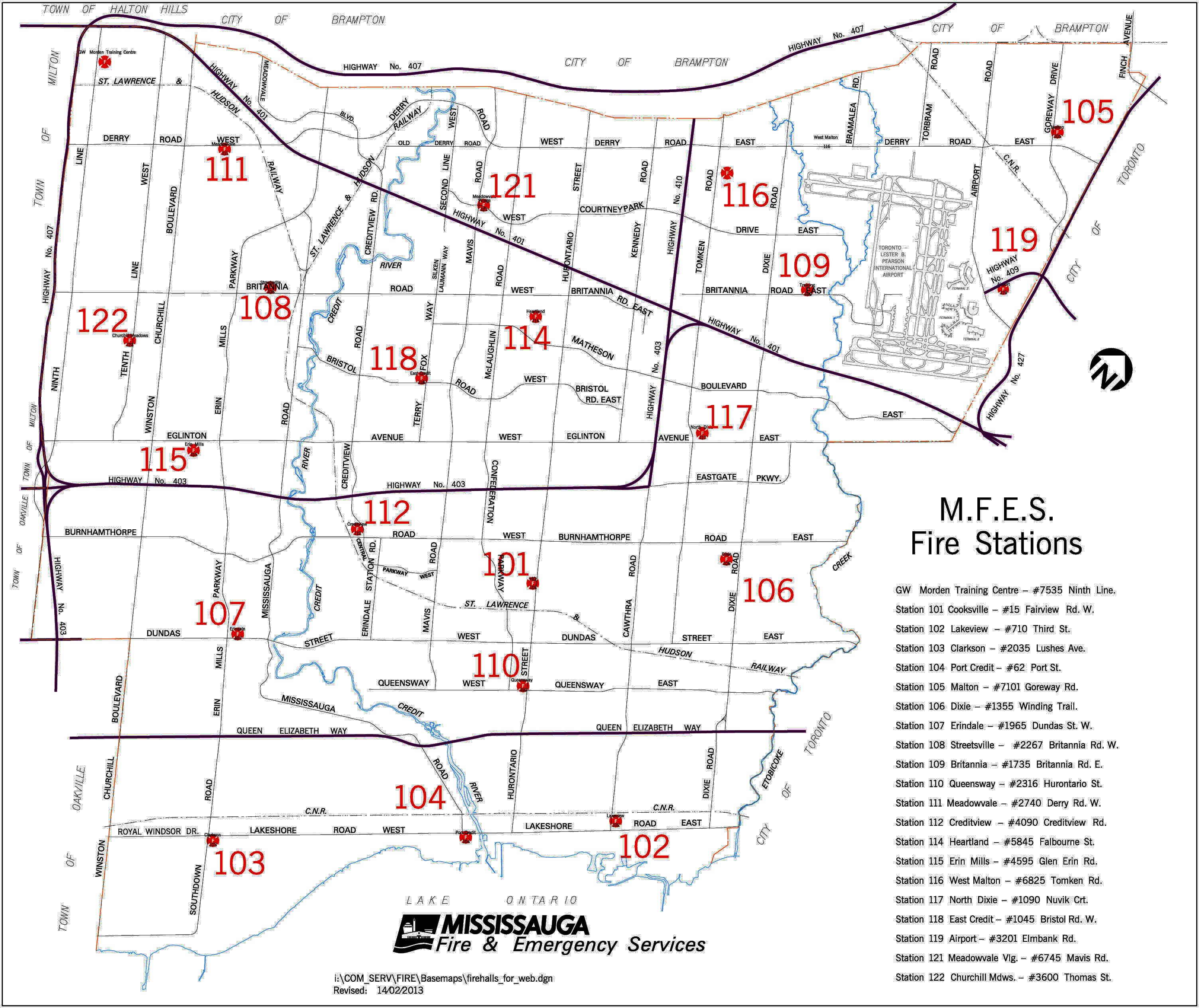
Based on its size, Mississauga should have about 44 fire stations, it currently has 21.
The scourge of asbestos is an issue afflicting a variety of old buildings. During the middle of the 20th Century, it was a popularly used material. But its presence in fire stations poses unique risks.
Unlike an office, firefighters live in their bases, with spaces to sleep on extended shifts or through the night. Overtime is common and first responders can spend long hours inside their station.
The poor condition of some Mississauga stations raises more concern over how safe asbestos actually is in the walls. With at least one of the buildings in particularly bad condition, the City’s cavalier stance toward the safety of firefighters, who are already exposed to extremely dangerous conditions on the job, has left the union head in disbelief.
“My question is: would we be treating our buildings the same as any other city buildings? Is there asbestos in City Hall? Is asbestos in the councillors’ offices?” Varcoe asked.
Email: [email protected]
Twitter: @isaaccallan
Tel: 647 561-4879
COVID-19 is impacting all Canadians. At a time when vital public information is needed by everyone, The Pointer has taken down our paywall on all stories relating to the pandemic and those of public interest to ensure every resident of Brampton and Mississauga has access to the facts. For those who are able, we encourage you to consider a subscription. This will help us report on important public interest issues the community needs to know about now more than ever. You can register for a 30-day free trial HERE. Thereafter, The Pointer will charge $10 a month and you can cancel any time right on the website. Thank you.
Submit a correction about this story


